The western white pine was the most abundant forest type in the Inland Northwest 50 years ago. Long, clear trunks skyrocketed to heights of 200 feet which isn’t large compared to other conifers. But their tenacity to grow fast after fires and their resistance to many diseases allows them to be ecologically successful.
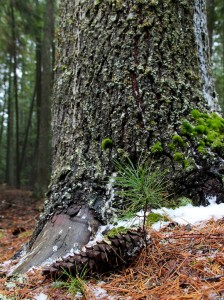
Western white pine seedlings can become established in moderately shady areas, like beneath a mature pine, but mature pines prefer full sun
Fire provides openings for the fast-growing seedlings to outcompete other conifers and dominate the forest canopy for over 200 years. However, western white pine aren’t as resistant to fire as ponderosa pine or larch.
Western white pine can be recognized by the bundles of five slender needles that are three to five inches long. At high elevations, whitebark pine and western white pine can be confused since both have five needles. However, western white pine needles have a whitish-blue appearance and whitebark pine needles have a yellowish-green appearance.
When the needles are too high to see, look no farther than the bark that is cut into small, regular squares which distinguishes it from other conifers. Or look for the large five- to fifteen-inch cones scattered around the base of the tree.
Young and old trees can also be identified by the regular-spaced branches. Each year western white pine grow a whorl of branches along the smooth trunk. Depending on the conditions the whorls can be spaced anywhere from two to four feet apart.
The whorls of branches provide an easy way to estimate the age of the tree without boring into the trunk. Just count the whorls and add two years for the initial growth of the seedling to determine the age.
Unfortunately, the lowest branches can be the demise of the western white pine. While resistant to most native insects and diseases, the western white pine has little resistance to white pine blister rust which was brought to a West Coast port in the early 1900’s on imported white pine seedlings. The non-native blister rust began to decimate the large, abundant stands of western white pine.
The lowest branches (under eight feet) are the most susceptible to blister rust. Blister rust kills a tree by girdling branches and stems. The rust typically begins as cankers on the branches and as the rust fungus grows in and around the tree, it girdles the cambium layer which stops the flow of nutrients.
Blister rust spreads through the forest by utilizing an alternate host to complete its life cycle–currants, gooseberry and other plants in the genus Ribes. The rust spores can be carried over 10 miles by the wind to infect new western white pine (and other five-needle pines) if there is adequate moisture.
However, nature seems to make exceptions and some western white pine are naturally resistant to blister rust. But even those resistant trees have to contend with mountain pine beetles and fungal root diseases. The trees that survive the diseases and insects to produce cones are the future of western white pine forests.

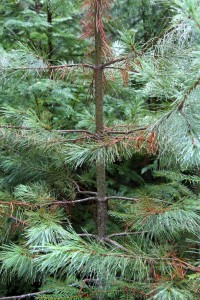
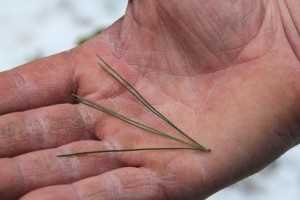
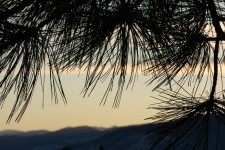
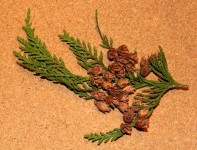
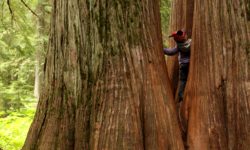
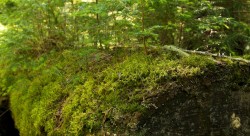
Hi Laura: Your very interesting article on White Pine Blister Rust caught my eye because I was a Blister Ruster the summers of 1957,58 and 59. Back then we called the program the BRC. I spent those summers in the Idaho panhandle with other college age guys pulling Ribes lacuster and Ribes americana . All in vain it appears. What beautiful trees the, Western White Pine. The breeze blowing through those towering branches was music to my ears. It was one of the most memorable experiences in my life. We were liable for fire duty also and saw duty several times each summer. Sorry there’s so many eating up forests as I write.
I just now discovered your website, Naturally Northern Idaho and glad I did. I’ll be visiting it more from now on.
Thanks for sharing!
Laura